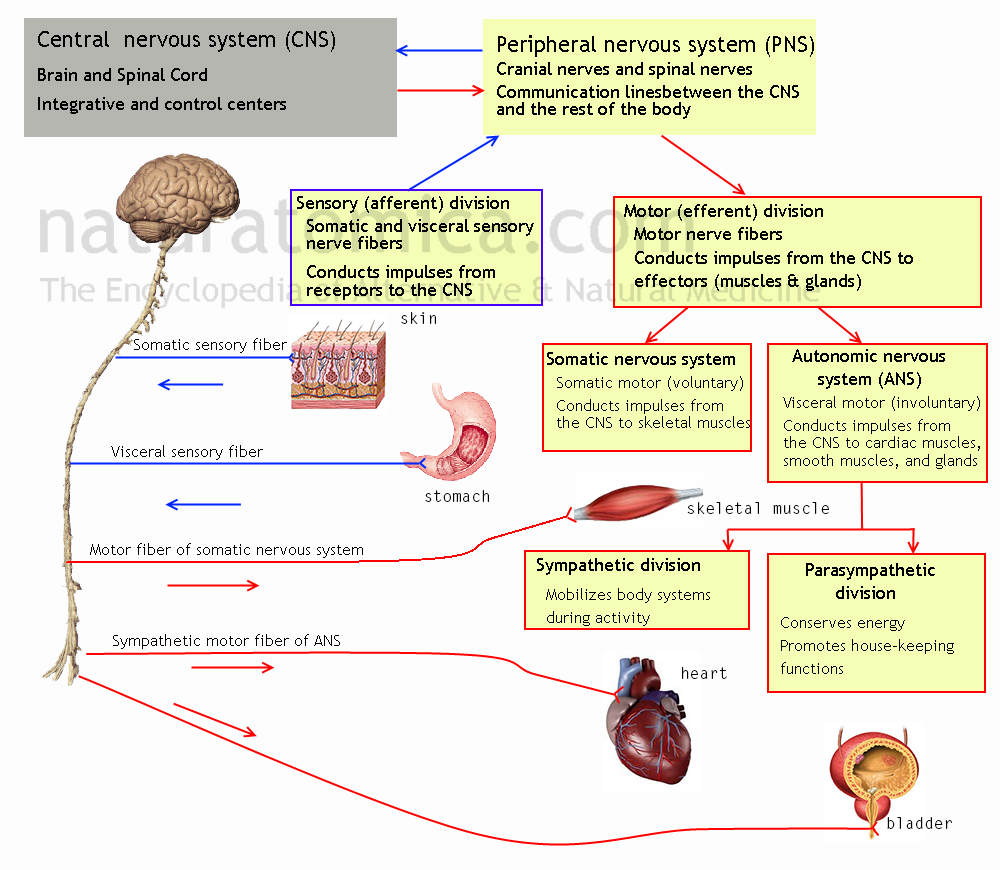Subdivisions & Functions of Nervous System
Overview
The human nervous system is the most complex physical system known to mankind. It is a highly integrated system that consists of many billions interactive units whose constantly changing patterns of activity are reflected in every aspect of human behaviour.
The nervous system is a control and communication centre of the body. It guards every thought, action, and emotion of a human being. Its cells communicate by electrical and chemical signals, which are rapid and specific, and usually cause almost immediate responses.
Functions of the Nervous System
The functions of the nervous system can be grouped in three major overlapping functions:
Sensory function (or Sensory input) – the nervous system uses its sensory receptors to gather information from inside and outside of the body to monitor changes in the internal (pressure, pH, carbon dioxide concentration, etc.) and external (temperature, light, sound, etc.) environment.
Integration – the nervous system processes and converts sensory inputs into electrical signals (nerve impulses) that are transmitted to the brain where the information is analysed and integrated into the response to a particular sensory input.
Motor function (or Motor output) – the motor output is a response generated based on the sensory input and integration. The nervous system responds by sending signals (impulses) to effector organs (muscles and glands). Effector organs are organs that cause an effect in response to directors/command from the nervous system.
Subdivisions of Nervous System
For convenience, the nervous system can be divided into two major divisions: Central Nervous System (CNS) and Peripheral Nervous System (PNS).
Central Nervous System
The CNS contains the great majority of neuronal cell bodies, and is divisible into the spinal cord and the brain. The CNS performs integrative and control functions. Even though the brain and spinal cord are considered to be two separate organs, they are continuous at the foramen magnum.
Peripheral Nervous System
The PNS is composed mainly of the axons of sensory and motor neurons that form the cranial nerves (12 pairs) and spinal nerves (31 pairs). The PNS nerves are communication lines between CNS and the rest of the body. The spinal nerves carry impulses to and from the spinal cord; and cranial nerves carry impulses to and from the brain.
The CNS and PNS have further branches/divisions, which are outlined in the CNS organisation and the PNS organisation sections.
References
- Epplegate, Edith J. (2011). The anatomy and physiology learning system. 4th ed. Missouri: Saunders
- Marieb, E.N. & Hoehn, K. (2004). Human Anatomy & Physiology. 8th ed. Pearson Education, Inc
- Williams, P.L. (1995). Gray's Anatomy the anatomical basics of medicine and surgery. New York: Churchill Livingstone
Posted in Subdivisions & Functions
Ask a Question Or Join a Discussion



